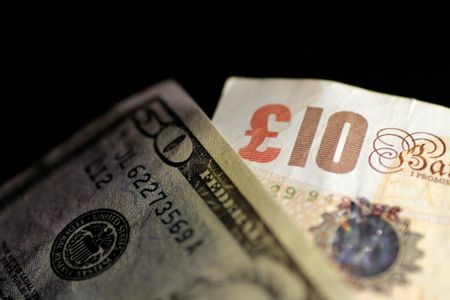Forex
Policy divergence should support GBP/USD flows – UBS

Investing.com – The Federal Reserve has started its easing cycle with a 50 basis-point cut, while the Bank of England is seen as on a more gradual easing path. This divergence should continue to fuel GBP/USD-positive carry flows, said UBS.
At 08:35 ET (12:35 GMT), fell 0.2% to 1.3382, but the pair is around 1.3% higher over the course of the last week.
The Federal Reserve’s easing cycle has finally started with a 50bp cut at its September meeting, and is likely to continue through 2025. The Fed’s dot plot indicates another 50bps of cuts in total across the remaining two meetings of the year.
On the flip side, UK inflation has turned out to be stickier than policymakers were hoping. Hence, compared to the Fed, the Bank of England is likely to take a much more gradual easing path.
“With the Fed starting its easing cycle later than most other G10 central banks and from a higher starting point, we expect it to cut rates more forcefully in the coming months and quarters, especially relative to the Bank of England,” analysts at UBS said, in a note dated Sept. 24.
That should reduce the USD’s yield advantage, which has been a supportive factor for the currency in recent years, the bank added.
“As a result, we expect some current USD overvaluation to fade over the coming months and quarters.”
“While short-term setbacks are possible after its recent rally, we think the pair will continue to be supported and forecast a rise to 1.38 by end of September 2025,” UBS added.

 Forex3 years ago
Forex3 years agoForex Today: the dollar is gaining strength amid gloomy sentiment at the start of the Fed’s week

 Forex3 years ago
Forex3 years agoUnbiased review of Pocket Option broker

 Forex3 years ago
Forex3 years agoDollar to pound sterling exchange rate today: Pound plummeted to its lowest since 1985

 Forex3 years ago
Forex3 years agoHow is the Australian dollar doing today?

 Cryptocurrency3 years ago
Cryptocurrency3 years agoWhat happened in the crypto market – current events today

 World3 years ago
World3 years agoWhy are modern video games an art form?

 Commodities3 years ago
Commodities3 years agoCopper continues to fall in price on expectations of lower demand in China

 Economy3 years ago
Economy3 years agoCrude oil tankers double in price due to EU anti-Russian sanctions





















